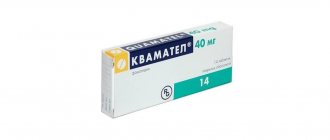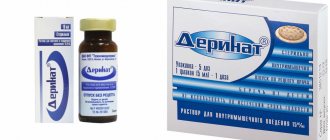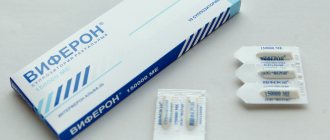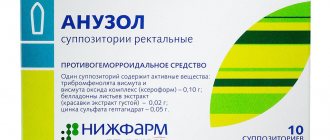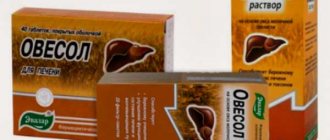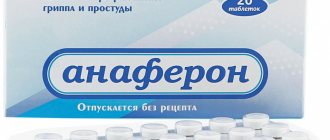The drug is produced in the form of tablets. They contain 2 active ingredients - diosmin (0.45 g each) and hesperidin (50 mg each). Auxiliary components are: magnesium stearate, sodium gluconate, titanium oxide, talc and others. Tablets are packaged in blisters of 10 or 15 pcs. Each package contains from 2 to 9 such blisters.
The drug has an angioprotective effect and functions as a venotonic. It contains flavonoids, which are highly active. When blood flow in the legs is impaired, they improve the tone of the veins and capillaries, as well as their elasticity. As a result, capillaries become stronger and less damaged. There is also an improvement in lymph outflow. The drug is excreted from the body mainly through urine and feces; the half-life is 11 hours.
You can purchase the drug with a doctor's prescription. It can be stored under standard conditions - temperature no more than 30 degrees, in the absence of direct sunlight. The shelf life is 2 years from the date of production.
Indications, contraindications and side effects
"Venarus" is used to treat:
- hemorrhoids in acute or chronic form;
- leg cramps;
- swelling;
- ulcers of a trophic nature associated with venous insufficiency.
Use is contraindicated only in case of allergic reactions (individual intolerance to active or auxiliary components). Also, the use of the medicine is excluded during breastfeeding. Before treatment during pregnancy, a mandatory consultation with a doctor is indicated.
Possible side effects:
- asthenia;
- headaches;
- allergic skin rashes;
- dizziness;
- nausea, vomiting.
Cases of overdose have not been registered to date. However, if diarrhea, general weakness, nausea occurs, you need to stop taking it and rinse the stomach, and if necessary, induce vomiting. After this, you need to chew several tablets of activated carbon or other sorbents. In extreme cases, it is recommended to call for emergency assistance.
Venarus TB p/o 500 mg N 60
Active substances
diosmin (diosmin) Rec.INN
hesperidin (hesperidin)
pharmachologic effect
Venotonic and venoprotective drug. It has an angioprotective and venotonic effect. Reduces the distensibility of veins, increases their tone and reduces venous stagnation; reduces permeability and fragility of capillaries and increases their resistance; improves microcirculation and lymphatic drainage. When used systematically, it reduces the severity of clinical manifestations of chronic venous insufficiency of the lower extremities of an organic and functional nature.
Indications for the drug Venarus®
- Treatment of symptoms of venous-lymphatic insufficiency: pain;
- spasms of the lower extremities; feeling of heaviness and fullness in the legs;
- tired legs
Treatment of manifestations of venous-lymphatic insufficiency:
- swelling of the lower extremities;
- trophic changes in the skin and subcutaneous tissue;
- venous trophic ulcers.
- Symptomatic treatment of acute and chronic hemorrhoids.
Dosage regimen
Inside.
The recommended dose for venous-lymphatic insufficiency is 2 tablets/day (in 1 or 2 doses): morning, afternoon and/or evening, during meals.
The course of treatment can last several months (up to 12 months). In case of recurrence of symptoms, on the recommendation of a doctor, the course of treatment can be repeated.
The recommended dose for acute hemorrhoids is 6 tablets/day: 3 tablets. in the morning and 3 tablets. in the evening for 4 days, then 4 tablets/day: 2 tablets. in the morning and 2 tablets. in the evening for the next 3 days.
The recommended dose for chronic hemorrhoids is 2 tablets/day with meals.
Before use, consultation with a specialist is required. The method of administration and dosage regimen of a particular drug depend on its release form and other factors. The optimal dosage regimen is determined by the doctor. Storage mode, interactions and side effects are indicated in the instructions.
Side effect
The frequency of adverse reactions is presented as follows: very often (≥1/10), often (≥1/100 and <1/10), infrequently (≥1/1000 and <1/100), rarely (≥1/10,000 and <1/1000) and very rarely (<1/10,000), frequency unknown (adverse reactions, the frequency of which cannot be estimated from the available data).
From the nervous system: rarely - dizziness, headache, general malaise; frequency unknown – convulsions.
From the digestive system: often – diarrhea, dyspepsia, nausea, vomiting; infrequently - colitis; frequency unknown - abdominal pain.
From the respiratory system: frequency unknown - sore throat, chest pain.
From the skin: rarely - rash, itching, urticaria; frequency unknown - allergic dermatitis, hyperemia, isolated swelling of the face, lips, eyelids, in exceptional cases angioedema.
If any of the above adverse reactions worsen, or the patient notices other adverse reactions, the doctor should be informed.
Contraindications for use
- hypersensitivity to the active components or excipients included in the drug;
- The drug is not recommended for nursing women.
Use during pregnancy and breastfeeding
Experimental studies on animals did not reveal teratogenic effects. To date, there have been no reports of any side effects when using the drug by pregnant women.
Due to the lack of data regarding the excretion of the drug into breast milk, taking the drug is not recommended for nursing women.
special instructions
In case of exacerbation of hemorrhoids, the prescription of this drug does not replace the specific treatment of other anal disorders. The duration of treatment should not exceed the periods specified in the “Dosage regimen” section. If symptoms do not disappear after the recommended course of therapy, a proctological examination should be performed and the therapy used should be reconsidered.
In the presence of venous circulation disorders, the maximum effect of treatment is ensured by combining therapy with a healthy (balanced) lifestyle: it is advisable to avoid long exposure to the sun, long periods of standing, as well as reducing excess body weight. Walking and, in some cases, wearing special stockings helps improve blood circulation.
Impact on the ability to drive vehicles and operate machinery
Does not affect.
Instructions for use "Venarus"
The drug is taken orally - the tablets are not chewed or broken. They should be washed down with plenty of water. The maximum daily amount is 2 tablets. Moreover, during the first week it is better to take them separately: for example, 1 pc. in the morning and 1 pc. In the evening. Starting from the second week (from the 8th day of treatment), 2 tablets can be taken simultaneously. In this case, the daily dosage remains the same.
When treating acute hemorrhoids, in the first 4 days the daily amount is increased to 6 pieces, and over the next 3 days - to 4 pieces. Then they move on to the standard rate: no more than 2 tablets per day. The general course of treatment is quite long and takes 3 months. In some cases, it can be reduced or increased - the doctor decides on the duration, total number of tablets and frequency of administration.
Venarus 500 mg 30 pcs. film-coated tablets. obol.
pharmachologic effect
Venotonic and venoprotective agent.
Composition and release form Venarus 500 mg 30 pcs. film-coated tablets. obol.
1 tablet contains:
- active ingredients: hesperidin - 50 mg, diosmin - 450 mg;
- excipients: microcrystalline cellulose 62.0 mg, sodium carboxymethyl starch (sodium starch glycolate) 27.0 mg, gelatin 31.0 mg, talc 6.0 mg, magnesium stearate 4.0 mg;
- shell: hypromellose (hydroxypropyl methylcellulose 20.7 mg, macrogol 6000 (polyethylene glycol 6000) 3.38 mg, sodium lauryl sulfate 0.1 mg, magnesium stearate 1.24 mg, titanium dioxide 3.94 mg, iron oxide red 0.3 mg, iron oxide yellow 0.34 mg.
Film-coated tablets, 500 mg.
10 or 15 film-coated tablets in a blister pack.
2, 3, 4, 6, 7, 8, 9 strip packaging along with instructions for use are placed in a cardboard pack.
Description of the dosage form
Orange-pink film-coated tablets, biconvex, oblong in shape with rounded ends, scored. On a cross section, the kernel is grayish-yellow to brownish-gray in color.
Directions for use and doses
Inside.
The recommended dose for venous-lymphatic insufficiency is 2 tablets per day (in one or two doses): morning, afternoon and/or evening, during meals.
The duration of treatment can be several months (up to 12 months). In case of recurrence of symptoms, on the recommendation of a doctor, the course of treatment can be repeated.
The recommended dose for acute hemorrhoids is 6 tablets per day: 3 tablets in the morning and 3 tablets in the evening for 4 days, then 4 tablets per day: 2 tablets in the morning and 2 tablets in the evening for the next 3 days.
The recommended dose for chronic hemorrhoids is 2 tablets per day with food.
Pharmacodynamics
It has an angioprotective and venotonic effect. Reduces the distensibility of veins, increases their tone and reduces venous stagnation; reduces permeability and fragility of capillaries and increases their resistance; improves microcirculation and lymphatic drainage. When used systematically, it reduces the severity of clinical manifestations of chronic venous insufficiency of the lower extremities of an organic and functional nature.
Pharmacokinetics
The main excretion of the drug occurs in the feces. On average, about 14% of the administered amount of the drug is excreted in the urine.
The half-life is 11 hours.
The drug undergoes active metabolism, which is confirmed by the presence of phenolic acids in the urine.
Indications for use Venarus 500 mg 30 pcs. film-coated tablets. obol.
Treatment of symptoms of venous-lymphatic insufficiency: pain, cramps of the lower extremities, a feeling of heaviness and fullness in the legs, “fatigue” of the legs. Treatment of manifestations of venous-lymphatic insufficiency: edema of the lower extremities, trophic changes in the skin and subcutaneous tissue, venous trophic ulcers. Symptomatic treatment of acute and chronic hemorrhoids.
Contraindications
Hypersensitivity to the active components or excipients included in the drug.
The drug is not recommended for nursing women.
Effect on the body
| Venotonic and angioprotective |
Application of Venarus 500 mg 30 pcs. film-coated tablets. obol. during pregnancy and breastfeeding
Pregnancy
Experiments on animals did not reveal teratogenic effects. To date, there have been no reports of any side effects when using the drug by pregnant women.
Breastfeeding period
Due to the lack of data regarding the excretion of the drug into breast milk, taking the drug is not recommended for nursing women.
special instructions
In case of exacerbation of hemorrhoids, the prescription of this drug does not replace the specific treatment of other anal disorders.
The duration of treatment should not exceed the periods specified in the section “Method of administration and dosage”. If symptoms do not disappear after the recommended course of therapy, a proctological examination should be performed and the therapy used should be reconsidered.
In the presence of venous circulation disorders, the maximum effect of treatment is ensured by combining therapy with a healthy (balanced) lifestyle: it is advisable to avoid long exposure to the sun, long periods of standing, as well as reducing excess body weight. Walking and, in some cases, wearing special stockings helps improve blood circulation.
Impact on the ability to drive vehicles, operate machinery and engage in other activities that require increased concentration: no effect.
Overdose
No cases of overdose have been described.
In case of drug overdose, seek medical help immediately.
Side effects Venarus 500 mg 30 pcs. film-coated tablets. obol.
The frequency of adverse reactions is presented as follows: very often (≥1/10 cases), often (≥1/100 and
Adverse reactions, the frequency of which cannot be estimated from the available data, are designated “frequency unknown.”
From the central nervous system: rarely - dizziness, headache, general malaise; frequency unknown - convulsions.
From the gastrointestinal tract: often - diarrhea, dyspepsia, nausea, vomiting; infrequently - colitis; frequency unknown - abdominal pain.
From the respiratory system, chest and mediastinal organs: frequency unknown - sore throat, chest pain.
From the skin: rarely - rash, itching, urticaria; frequency unknown - allergic dermatitis, hyperemia, isolated swelling of the face, lips, eyelids, in exceptional cases angioedema.
If any of the adverse reactions indicated in the instructions worsen, or you notice other adverse reactions not listed in the instructions, notify your doctor.
Drug interactions
Not noted.
You should inform your doctor about all medications you are taking.
Venarus
Description of the medicinal product VENARUS® (VENARUS) Based on the instructions for use of the drug officially approved in 2021, update date: 09.2015.17
Release form, packaging and composition Clinical-pharmacological. group Pharmacotherapeutic group Pharmacological action Pharmacokinetics Indications of the drug Dosage regimen Side effects Contraindications for use Special instructions Overdose Drug interactions Dispensing conditions from pharmacies Storage conditions Expiration date Contacts for requests
Owner of the registration certificate: FP OBOLENSKOE, JSC (Russia)
Contacts for inquiries: OBOLENSKOYE JSC PHARMACEUTICAL ENTERPRISE (Russia) ATX code: C05CA53 (Diosmin in combination with other drugs)
Active substances
diosmin (diosmin) Rec.INN registered by WHO hesperidin (hesperidin) NARus Accepted in Russia
Dosage form
Venarus®
Tab., cover. film-coated, 450 mg+50 mg: 20, 30, 40, 45, 60, 70, 80, 90, 105, 120 or 135 pcs.reg. No.: LSR-002282/08 dated 04/01/08 - Indefinitely Re-registration date: 07/27/15
Release form, packaging and composition of Venarus®
Tablets, film-coated, orange-pink in color, biconvex, oblong in shape with rounded ends, scored, in cross section the core is grayish-yellow to brownish-gray.
1 tab.
hesperidin 50 mg
diosmin 450 mg
Excipients: microcrystalline cellulose - 62 mg, sodium carboxymethyl starch (sodium starch glycolate) - 27 mg, gelatin - 31 mg, talc - 6 mg, magnesium stearate - 4 mg.
Shell composition: hypromellose (hydroxypropyl methylcellulose) - 20.7 mg, macrogol 6000 (polyethylene glycol 6000) - 3.38 mg, sodium lauryl sulfate - 0.1 mg, magnesium stearate - 1.24 mg, titanium dioxide - 3.94 mg, iron oxide red - 0.3 mg, iron oxide yellow - 0.34 mg.
10 pieces. — cellular contour packages (2) — cardboard packs. 10 pieces. — cellular contour packages (3) — cardboard packs. 10 pieces. — contour cell packaging (4) — cardboard packs. 10 pieces. — contour cell packaging (6) — cardboard packs. 10 pieces. — contour cell packaging (7) — cardboard packs. 10 pieces. — contour cell packaging (8) — cardboard packs. 10 pieces. — contour cell packaging (9) — cardboard packs. 15 pcs. — cellular contour packages (2) — cardboard packs. 15 pcs. — cellular contour packages (3) — cardboard packs. 15 pcs. — contour cell packaging (4) — cardboard packs. 15 pcs. — contour cell packaging (6) — cardboard packs. 15 pcs. — contour cell packaging (7) — cardboard packs. 15 pcs. — contour cell packaging (8) — cardboard packs. 15 pcs. — contour cell packaging (9) — cardboard packs.
Clinical-pharmacological group: Venotonic drug Pharmaco-therapeutic group: Venotonic and venoprotective drug
pharmachologic effect
Venotonic and venoprotective drug. It has an angioprotective and venotonic effect. Reduces the distensibility of veins, increases their tone and reduces venous stagnation, reduces permeability, capillary fragility and increases their resistance, improves microcirculation and lymphatic drainage. When used systematically, it reduces the severity of clinical manifestations of chronic venous insufficiency of the lower extremities of an organic and functional nature.
Pharmacokinetics
The main excretion of the drug occurs in the feces. On average, about 14% of the administered amount of the drug is excreted in the urine. T1/2 is 11 hours. The drug undergoes active metabolism, which is confirmed by the presence of phenolic acids in the urine.
Indications for the drug Venarus®
Treatment of symptoms of venous-lymphatic insufficiency:
pain, cramps of the lower extremities, a feeling of heaviness and fullness in the legs, “fatigue” of the legs.
Treatment of manifestations of venous-lymphatic insufficiency:
swelling of the lower extremities, trophic changes in the skin and subcutaneous tissue, venous trophic ulcers.
Symptomatic treatment of acute and chronic hemorrhoids.
ICD-10 codes
Dosage regimen
Inside.
The recommended dose for venous-lymphatic insufficiency is 2 tablets/day (in 1 or 2 doses): morning, afternoon and/or evening, during meals.
The course of treatment can last several months (up to 12 months). In case of recurrence of symptoms, on the recommendation of a doctor, the course of treatment can be repeated.
The recommended dose for acute hemorrhoids is 6 tablets/day: 3 tablets. in the morning and 3 tablets. in the evening for 4 days, then 4 tablets/day: 2 tablets. in the morning and 2 tablets. in the evening for the next 3 days.
The recommended dose for chronic hemorrhoids is 2 tablets/day with meals.
Side effect
The frequency of adverse reactions is presented as follows: very often (≥1/10), often (≥1/100 and <.1/10), infrequently (≥1/1000 and <.1/100), rarely (≥1/100). 10,000 and <.1/1000) and very rarely (<.1/10,000), frequency unknown (adverse reactions, the frequency of which cannot be estimated from the available data).
From the nervous system: rarely - dizziness, headache, general malaise, frequency unknown - convulsions.
From the digestive system: often - diarrhea, dyspepsia, nausea, vomiting, infrequently - colitis, frequency unknown - abdominal pain.
From the respiratory system: frequency unknown - sore throat, chest pain.
From the skin: rarely - rash, itching, urticaria, frequency unknown - allergic dermatitis, hyperemia, isolated swelling of the face, lips, eyelids, in exceptional cases angioedema.
If any of the above adverse reactions worsen, or the patient notices other adverse reactions, the doctor should be informed.
Contraindications for use
Hypersensitivity to the active components or excipients included in the drug; it is not recommended for nursing women to take the drug.
Use during pregnancy and breastfeeding
Experimental studies on animals did not reveal teratogenic effects. To date, there have been no reports of any side effects when using the drug by pregnant women.
Due to the lack of data regarding the excretion of the drug into breast milk, taking the drug is not recommended for nursing women.
special instructions
In case of exacerbation of hemorrhoids, the prescription of this drug does not replace the specific treatment of other anal disorders. The duration of treatment should not exceed the periods specified in the “Dosage regimen” section. If symptoms do not disappear after the recommended course of therapy, a proctological examination should be performed and the therapy used should be reconsidered.
In the presence of venous circulation disorders, the maximum effect of treatment is ensured by combining therapy with a healthy (balanced) lifestyle: it is advisable to avoid long exposure to the sun, long periods of standing, as well as reducing excess body weight. Walking and, in some cases, wearing special stockings helps improve blood circulation.
Impact on the ability to drive vehicles and operate machinery
Does not affect.
Overdose
No cases of overdose have been described.
In case of overdose of the drug, the patient should immediately seek medical help.
Drug interactions
Not noted. You should inform your doctor about all medications you are taking.
Storage conditions Venarus®
The drug should be stored out of the reach of children at a temperature not exceeding 25°C.
Shelf life Venarus® Shelf life - 3 years. Do not use after expiration date.
Terms of sale The drug is approved for use as an over-the-counter product.
Contacts for inquiries
OBOLENSKOYE JSC PHARMACEUTICAL ENTERPRISE (Russia)
142279 Moscow region, Serpukhov district, Obolensk district, industrial zone, Obolensk district, building 78 Tel./fax E-mail:
How to use
The course of administration and dose of the drug are determined based on the nature of the disease and the goal to be achieved. It is recommended to take the drug after meals so that the contents of the tablet do not harm the gastrointestinal tract. The tablet must be whole; if it is broken, the active substance may not reach the target due to the aggressive environment of the stomach.
For acute varicose veins, the number of tablets that need to be taken varies from 4 to 6. If we are talking about chronic varicose veins, then 2 tablets are enough. However, you should not decide on your own to take this drug; you should first consult your doctor. Only a specialist will be able to select the correct dosage, taking into account the characteristics of the body, medical history, severity of the current condition and other factors.
Composition and properties of the drug
The tablets contain two active components: diosmin and hesperidin. Diosmin is in the highest concentration, and occupies approximately 90% of the total composition. This is a natural component that reduces the permeability of the walls of blood vessels and increases their tone, improves blood supply and reduces pressure on the vessels. In addition, it concentrates in the veins of the legs and directly affects them.
Hesperidin occupies 10% of the total composition. Its properties are similar to the previous component, but it additionally eliminates the allergic reaction, lowers blood pressure and restores good coronary duct.
Together, these two active components have a vasoconstrictor effect, provide adequate nutrition and gas exchange in all cells. This effect prevents and prevents venous insufficiency, valve failure and blood stagnation in the venous bed.

